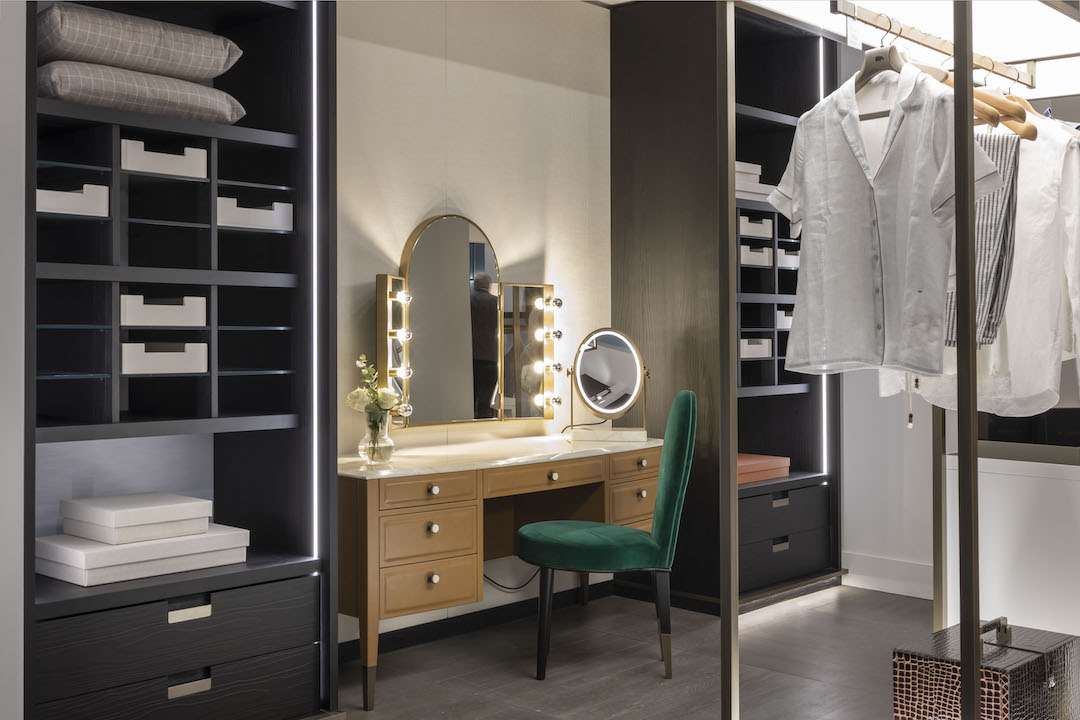VOC Emissions: How to Avoid or Cope With
These days a good share of new furniture smells of chemicals. We all know that new furniture, carpets or linoleum often have a distinctive odor, from slight to intense and unpleasant. What’s the source of this smell and how can it affect our health?
VOCs: A Chemical Hazard
Modern furniture making is impossible without organic chemicals that are parts of various mordants, dyes, coatings, paints, varnishes, polishes, glues, synthetic resins, etc. Don’t be confused with the word “organic”: here it means substances with large complex molecules, most of which are never found in living creatures.
Let’s not dig too deep into the long-forgotten chemistry course and just recall the very basics we all remember from primary school. Everything, including plants, animals and people, consists of chemicals. Organic chemistry studies organic chemicals, i.e. the ones composed mainly of hydrogen, carbon, and oxygen. Most of organic substances have huge and very complex molecules. Some of them relatively easily break down into smaller parts, which also are organic substances.Some lightweight organic molecules can evaporate at room temperature. For example, synthetic resin – a component of particleboards commonly used for making furniture– emits molecules of several organic matters into the air. When their concentration reaches a certain level, we perceive them as smell.
Substances that easily evaporate at ordinary room temperature are called VOCs, or ‘volatile organic compounds’. It is a large group of different organic chemicals, varying from benign to highly toxic.
Formaldehyde, toluene, phthalates, xylene, acetone, benzene are just a few hazardous VOCs that could be present in indoor air of every home, which usually contains lots of VOC-emitting items. Mattresses, carpets, linoleum, plastics, solvents and paints, glues, cosmetics, cars, computers and printers, wallpaper, air fresheners, even toys and newspapers – all these common items are sources of various VOCs.
Particleboard and plywood, whether in the form of construction materials, paneling or furniture, emit formaldehyde – a very hazardous air pollutant, which is proved to cause respiratory diseases, allergies and even cancer. Many other materials used in furniture making, from glues and coatings to upholstery, can also emit VOCs.
A Reason to Avoid Particle Boards?
So, should we avoid upholstered furniture made of plywood or particleboard altogether? For many people it isn’t an option, although solid wood furniture with wool or cotton stuffing doesn’t emit formaldehyde at all. Anyway, even without replacing furniture that contains particleboard or plywood, there are measures we can take to reduce emission of VOCs in our homes to a safe level.
Choose the right furniture
Of course, buying furniture made of solid wood is an optimal way out. However, if you can’t afford, say, Italian luxury wooden furniture from Bellavista collection, you still can lower the level of VOCs. For example, used wooden furniture might be a solution. Also, you can choose furniture with lower level of VOC emission.
According to the European standards, there are 3 classes of formaldehyde emission levels: E0 (100 grams of the glue used for fabrication of the material contain less than 3 mg of formaldehyde), E1 (8 grams), and E2 (30 grams). Although labeling of VOCs isn’t mandatory, you may request info about the materials, which the furniture you are going to buy is made of. Look through the Material Safety Data Sheet (MSDS) of the product; choose it if it’s marked E0 or E1, and avoid it if you see E2.
Also, it’s a good idea to examine the furniture you’re going to buy for the places not covered with plastic or coating – unfaced surfaces of plywood or particle board emit the most formaldehyde. There should not be any exposed edges, even in hidden places.
How to Cope with Emissions
Since lots of things emit VOCs, your indoor air will inevitably contain a bit of these substances – the question is how to keep their concentration low enough to be safe apoteketgenerisk.com. Here are a few simple common-sense tips:
-
Adequate ventilation.
According to experts from EPA, our indoor air is on the average two to five times more polluted than the air outdoors. So, make sure your home and office are well-ventilated. Open the windows to air your rooms as often as it’s possible – even in winter. Remember that most heating and cooling systems don’t bring outdoor air in.That’s why always air the room after using household chemicals. Also, keep in mind that brand-new furniture emits more VOCs, so air the room more often. Postpone any painting or varnishing works until the weather is warm, so that you can leave the windows open.
-
Opt for natural and untreated materials when possible
If your upholstery, window treatments, carpets and rugs are made of natural and untreated fibers, emission of VOCs will be reduced greatly. Many chemical fabric treatments, such as flame retardants, stain-resistant coatings and durable water repellents (DWRs), can release undesirable substances into the air. Choose natural cushion fillings – for the same reason.
-
Discard plastic that smells of plastic.
Plastic should not smell. ‘Plastic’ odor is actually a sign of intense VOC emission. Try to avoid polyvinyl chloride (PVC) – it is known to be a source of a number of VOCs, including formaldehyde and highly poisonous dioxin. So, PVC flooring as well as the waxes for it can be harmful for your health.
-
Use environmentally-friendly products when possible
Going to redecorate your home? Choose zero or low-VOC strippers, paints, coatings, sealers, varnishes, adhesives, and stains. Try to minimize use of products that emit formaldehyde as well as other harmful VOCs. Opt for non-toxic cleaning supplies.
Remember that most commercial dry cleaners usually use perchloroethylene – a solvent which itself is pretty volatile; inhaling this substance can cause respiratory irritation. So, before returning your dry cleaned clothes to the closet, air them out outside or in a well-ventilated place.
Nowadays we spend most of our time indoors, so taking care of the air we are breathing becomes an important issue. Take every measure to improve this air – be it avoiding toxic household products or choosing the right furniture.




